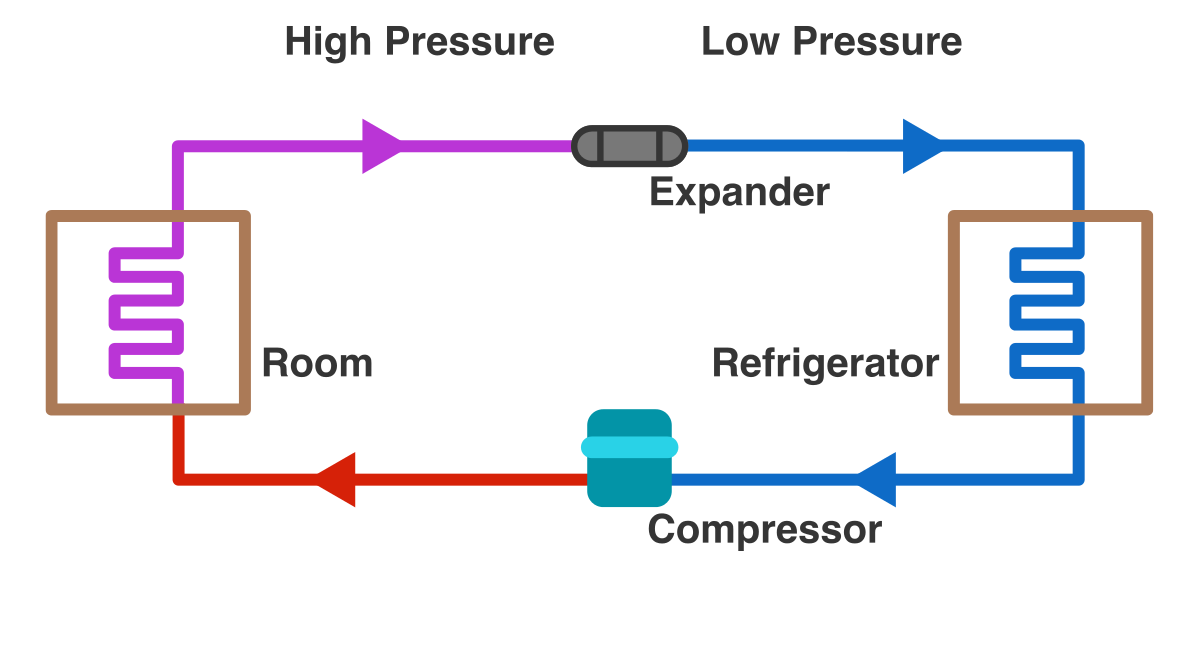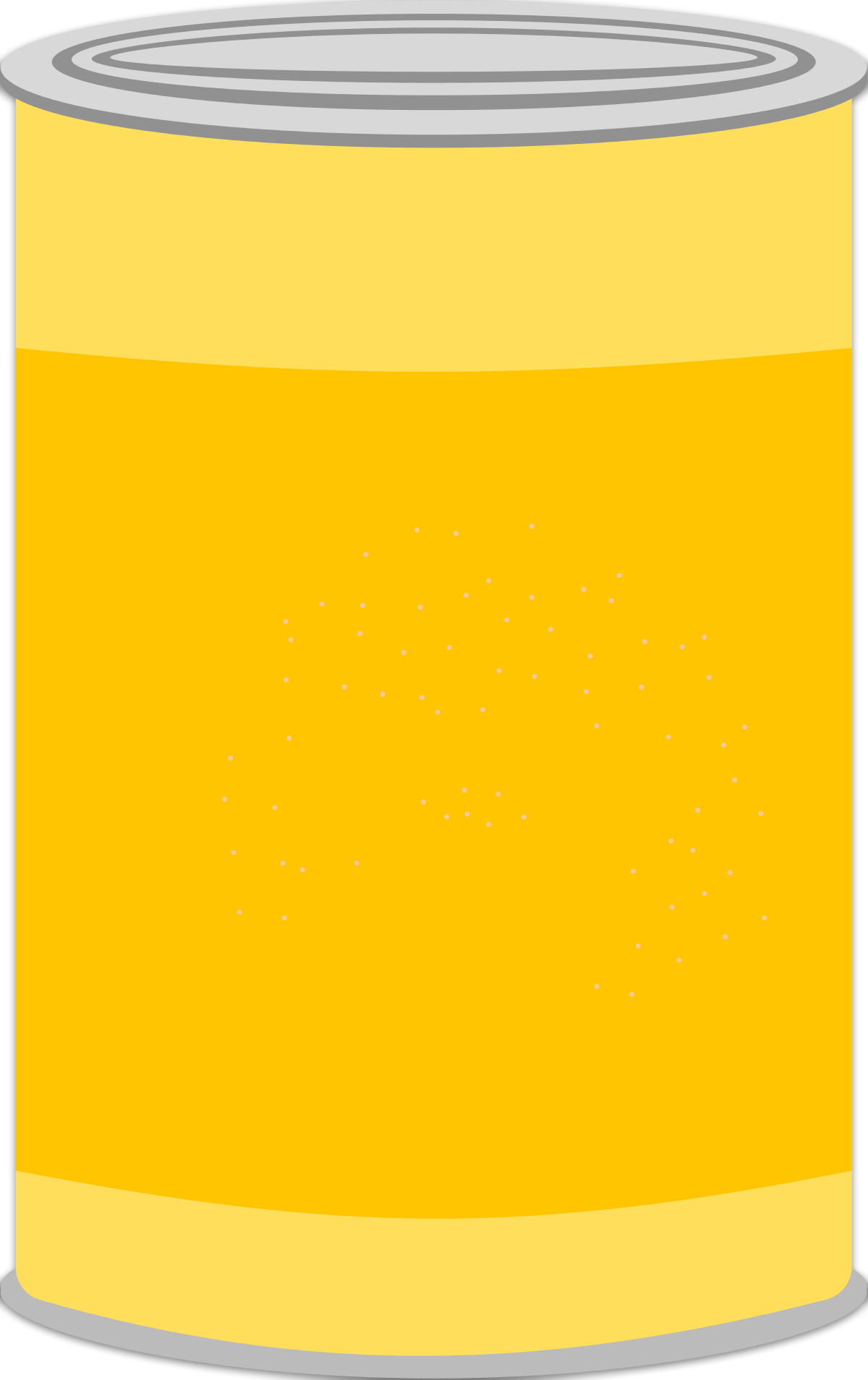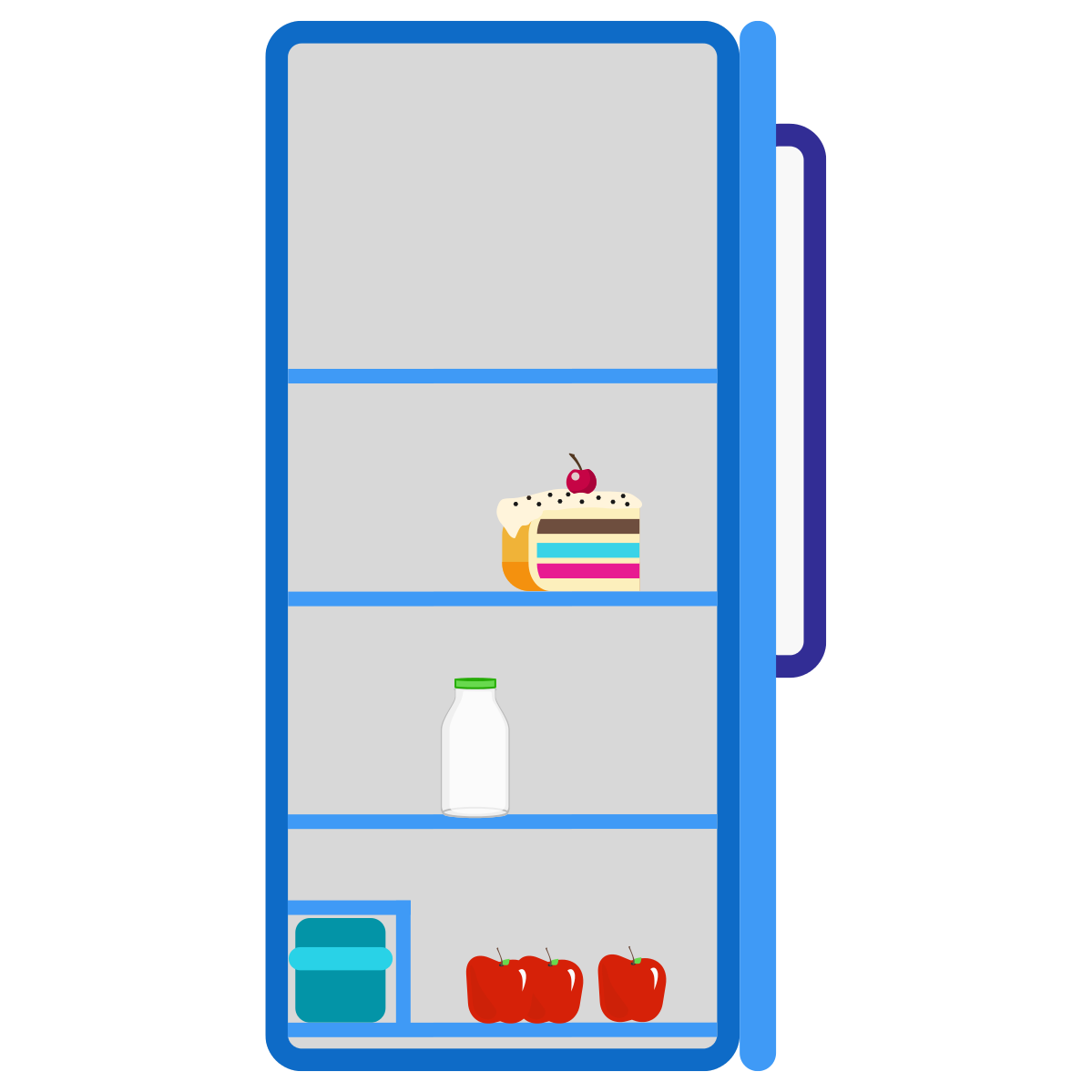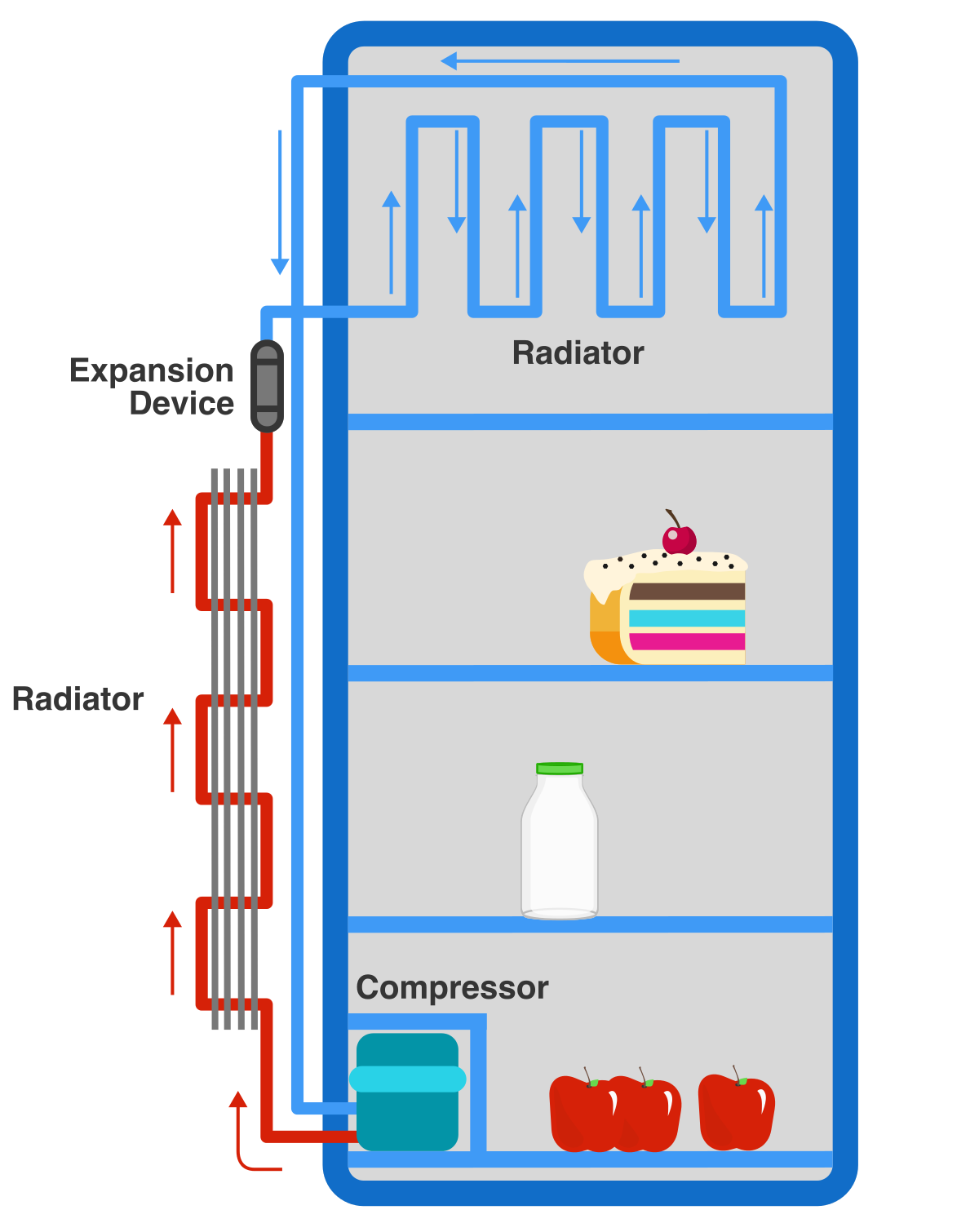Preserving food items was a major challenge from the olden ages itself.Then there was no refrigerators ,like today, so our grand parents used different methods to preserve food.At that time food preservation imposed serious constraints.
Some of the options were suspend perishable items in rivers, wells, or at the bottom of lakes.
Staple foods were heavily salted, spiced, pickled, canned, or dried to prevent bacterial growth.
But in the industrial age, we understand thermodynamic cycles and—through an interplay of pumps, valves, and heat exchange—learned to cool food to arbitrary temperatures using the refrigerator cycle.
Working
The refrigerator carries out a cycle to move heat out from the food compartment and into the room.
This occurs by three main parts:
- a pump that compresses gas
- a valve that expands gas
- radiators that allow gas to exchange heat with the surroundings.
Part 1: Compressor
The working of a compressor is similar to pumping up a football. You use a hand pump to quickly fill a basketball with air.
- The compressor pump heats gas and raises its pressure.
- The expansion valve drops the temperature of gas as well as its pressure.
- The radiator allows gas to come to thermal equilibrium with the surrounding environment.
We’ll now show how this set of phenomena can be used in conjunction to cool the contents of a refrigerator.
- When we put food into a refrigerator for the first time it is at a greater temperature than the air inside—this raises the temperature of the air inside the refrigerator.
- The air inside the refrigerator donates heat to the cold gas in the internal radiator, which carries the heat to the outside.
- This gas is then compressed at the pump, raising its temperature and pressure.
- After exiting the compressor, this gas cools to room temperature in the external radiator, maintaining its high pressure.
- At the expansion valve, this high pressure gas is allowed to expand, lowering its temperature significantly (below that of the refrigerator compartment).

By repeating this cycle, heat is iteratively removed from the inside of the refrigerator.
A thermostat turns the pump on when the temperature inside the refrigerator rises above a specific threshold level and turns the pump back off once the temperature drops below a target level.
Thus, the pump is engaged as needed.














